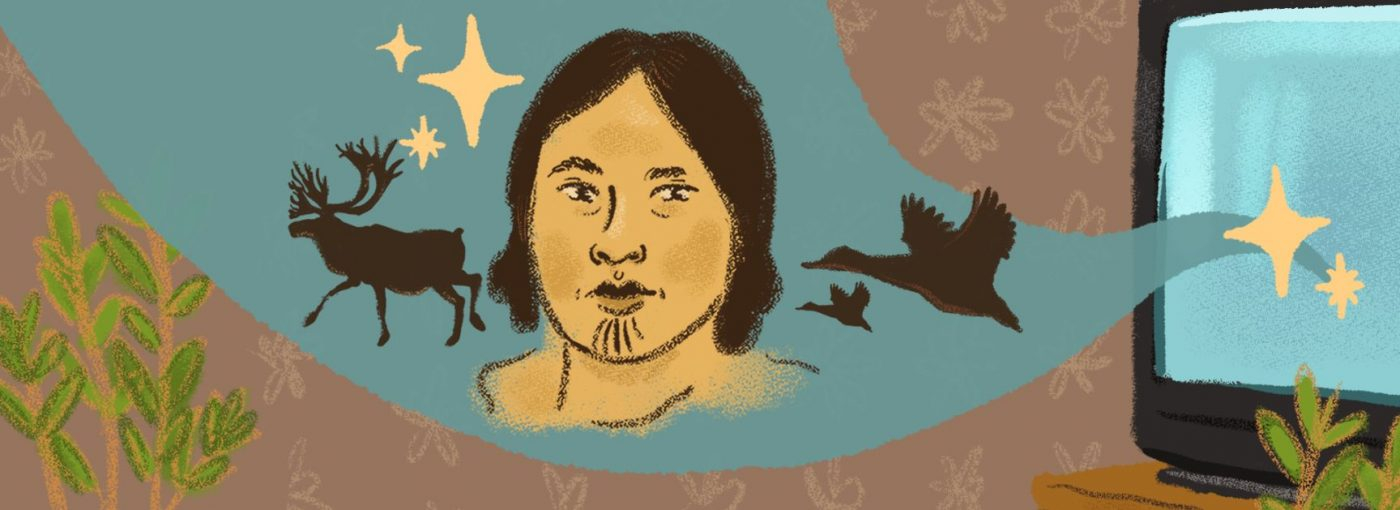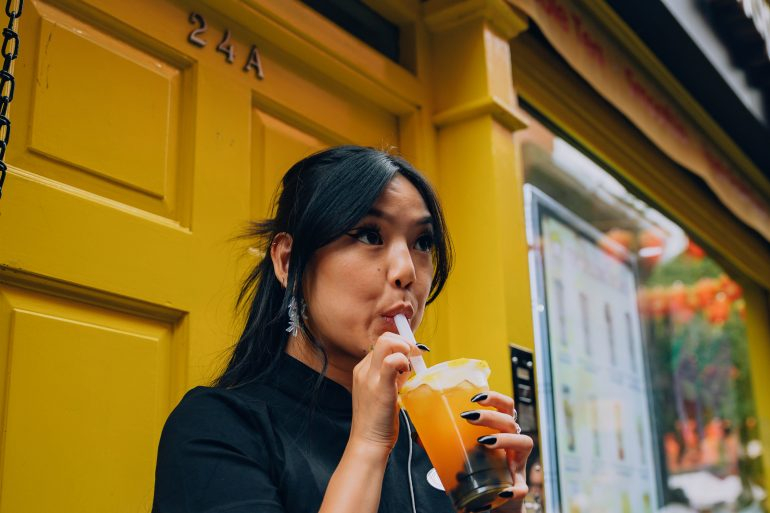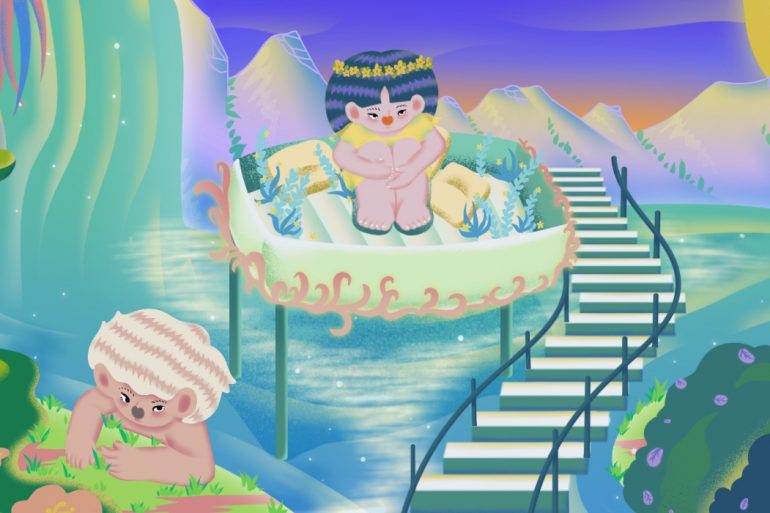When I first entered filmmaking some 25 years ago there were almost no Iñupiaq or other First Nations filmmakers in Alaska and less Iñupiaq content on our screen. The only on-screen representation we saw of Iñupiaq people was through the biased, racist, western gaze of those filmmakers and media makers who wanted to capture ‘real Eskimos’ to show to the outside world. I cannot count the number of times as a child I was filmed for a complete stranger’s home movies or photographed because a bus loads of tourists thought my fur parka and fur boots were ‘cute.’ If our community were in the media, the stories were deficit and racist covering things like the ‘failings’ of our generation in the western education system, or headlines like: ‘lawless Iñuipaq hunters insist on continuing primitive ways”.’
In spite of the lack of authentic presence in mainstream media, our leaders fought hard to maintain internal Iñupiaq communications and storytelling structures. We were amongst the first communities to start our own newspapers and radio stations that kept our connections alive through turbulent periods of conflict with the US Government.
I was raised in an Iñupiaq village 400 miles inside the Arctic Circle called Utqiagvik (in Alaska). My parents and aunties and uncles told us stories of the land, stories of our people, history and heritage. My imagination as a child was full of stories of giants and little people, shape shifters and places you couldn’t go to sleep; stories of giant bears and animals whose wisdom and knowledge guided people onto the right paths.
When I was about eight or nine we got a television and into our house flooded, cartoons and mainstream Anglo-European pop-culture stories of the time. We watched Winnie the Pooh, and The Simpsons. We saw movies like Mary Poppins, Ferris Bueller’s Day Off, Pretty Woman and Die Hard.
These shows defined a generation across America and carried universal western tropes – stories of rebellion against the system, of David and Goliath type battles into our living rooms. They reinforced our education of American pop culture and brought a perspective foreign to our experience but so enticingly glossed that most of us went running after scrunchy socks, big hair and bubble gum.

Iñupiaq stories are underpinned by lessons, creation stories, learnings from animals and fellow humans, or epic journeys and battles to overcome the human instincts of selfishness, meanness, arrogance, laziness and wastefulness. If Ferris Bueller had been in an Iñupiaq story, he would have been eaten by a bear as a result of being so lazy. Likewise, there is no ‘Pretty Woman’ character in Iñupiaq culture because in our culture, no woman needs to be saved by a man.
Shortly after graduating from university, I got a call from visionary Iñupiaq leader Jana Pausauraq Harcharek, who asked me to join two other Iñupiaq content creators (co Director/Producers Cathy Tagnak Rexford and Andrew Okpeaha Maclean) to make the first all Iñupiaq controlled historical documentary, The Duck-In.
Our goal was simple: document this moment of confrontation between the United States government and 300 Iñupiaq hunters, from our own missing Iñupiaq perspective.
I will never forget one particular interview. We were filming with one of the Elders who had been involved in the resistance. As a young man he had shown up in solidarity with the two arrested hunters, duck in hand, to be arrested and thrown into jail. Speaking on camera in the middle of his living room, he told the story of how important it was that future generations be able to continue to exist in accordance with Iñupiaq laws and this confusion over why the US federal government was trying to stop our sovereign right to live as our ancestors did. We had just shut off the camera and were wrapping up when the Elder’s grandsons came into the house, they looked at us shocked and confused. “Why were we interviewing their Aapa?” (Aapa is an Iñupiaq word meaning father but also used for grandfather.) “What were we doing there?” We explained we were making a film about the *Duck-In and that their Aapa’s involvement was going to help tell that history of Iñupiaq empowerment. The older of the two grandsons looked at us and asked, “What’s the Duck-In?”
In that moment it all coalesced for me; if our young people didn’t know their own history, the history their parents and grandparents had helped build; if they didn’t know where they came from, how did we expect them to know where they were going? If they are only exposed to stories like Ferris Bueller’s Day Off and Die Hard, and taught in school about the defending of the American Colony against (us) the savage natives, what more could we expect from them but a form of depression deep seated in their self identity – and, worse yet, a self-loathing?
We started The Duck-In with a remit to document the stories and ensure the Iñuipaq perspective was there. However the further we got into the series the more I began to understand that we had a responsibility to play an active role as next generation Iñupiaq storytellers in perpetuating the true heart of Iñupaiq storytelling- keeping the stories alive and interactive in the narrative of our community. Using these stories to teach, empower, grow, change and create consciousness – while entertaining. This became a welcome responsibility and grounding of the entire history series project.
One of the most important parts of this series was the decision to use our own community experts as the authoritative voices of the films. Rather than relying on external ‘history experts’ with academic qualifications, we went to the source – our Elders. Once again I witnessed the power of this medium to shift perspectives rather than uphold biased and bigoted tropes. Our Elders have the equivalent expertise as professors and PhD’s but are often unrecognised. We realised the simple power of placing our Elders on screen and backing their authority with the film’s structure to simultaneously recognise and give due respect to their expertise and wisdom, dispel the deep seated biased tropes against our people and perhaps more importantly returned them to their rightful status inside our communities.
Around this time, which was 2003, I also started to realise that in order to do this, we needed a bigger creative community. Under Jana’s leadership, she and the school district supported me to work in every school in every village running storytelling and digital media programs. These were always rewarding programs where I had the opportunity to sit with young people who had had no exposure to Iñupiaq content on screens or media and say, why can’t we have our own Iñupiaq MTV or ‘pimp my snow machine,’ which always got laughs. This was a useful way of using popular media at the time to introduce them to the idea of Iñupiaq content. We could then proceed to take them through a deeper process in reconnecting them with their Elders, heritage and authentic Iñupiaq characters and stories as they were making their own little films, music and animation and radio shows. As the program developed I eventually branched into the university, teaching adults to nurture an Iñupiaq film and digital media industry. I started flying in film industry experts to mentor local people who were interested in filmmaking, working towards a day when we would have our own local skilled talent base across the industry. Dreaming about a time when we had a multitude of Iñupiaq creators creating a multitude of Iñupiaq content.
We were fuelled by the reaction the history series films received. The outside community was fascinated by our stories of strength and resistance and other First Nations or minority communities were drawn to share with us their similar stories of resistance.
Although the series attracted domestic and international attention, what I am most proud of is the impact it had within our community.
In Utqiagvik, the schools came to me asking for more DVDs because those they had were disappearing off the shelves. Students who had previously been dropping out of school were now staying after class to watch not only the film but the extra clips of unedited interviews simply to hear the stories of their Elders. The Duck-In is now regularly referenced in public and policy comments and procedures. The stories of our Elders have re-entered into our collective consciousness. It is hard to measure this kind of success, but it is often the most powerful kind of success or impact that films and digital media can bring. Hearts and minds is what we call it in the mainstream industry but it would be more accurate to say spirit and strength for our internal community as it is often our own stories that give the greatest strength to our collective spirit.
My desire to create Iñupiaq content previously had been a strong calling to what I perceived as an opportunity to fill a space and use the artistic tools of the media to bend to the Iñupiaq storytelling characteristics. I still want to make Iñupaiq sci-fi and fantasy, romance, magical realism, comedy and drama films; I strive to make cinema with authentic Iñupiaq voice, style and structure; not just as a tool for representation as seems to still be the popular notion of the day.
I believe we can and are now making cinema that is not simply a translation of western stories with native faces or stories of disempowerment, pain and suffering due to impact of colonisation and theft of land; but stories that are deeper and hit a more powerful truth in the Iñupiaq and First Nation’s existence of now. I want to make cinema that is Iñupiaq because it is Iñupiaq – not in spite of the impact of colonisation but in strength of the Iñupiaq spirit I know through my lived experience as a product of an Iñupiaq community.
Strength grows from strength. Storytelling in film is a powerful tool in the empowerment armour of our people as we continue to resist the oppression of our language, culture, epistemologies and ontologies. Films and digital media allow us to simultaneously resist that oppression while reasserting and existing in our unique cultural identity.
When I started 25 years ago there were almost no other local Iñupiaq film and digital media makers. Now we have filmmakers, photographers, web developers, podcasters*, and more and more filmmakers and digital content creators.
Subscribe to shado's weekly newsletter
Exclusive event news, job and creative opportunities, first access to tickets and – just in case you missed them – our picks of the week, from inside shado and out.

Inside our community and right next to our struggles for survival in the midst of the violent context of oppression are our voices and they are most clearly undeniably defining an Iñupiaq generation of storytellers. This presence is profoundly shifting the landscape and future of our people. For my own children, nieces and nephews, I am grateful that in some small part I get to play a role in bringing an Iñupiaq and other First Alaskan’s choice to the screens and media they will consume, so that maybe instead of the new Ferris Bueller’s Day Off or Die Hard, they will also have, the History of the Iñupiaq series, Whale Song, Eagle Drums, Molly of Denali, On the Ice* and hopefully Qaurima, Nanum Kigum-The Polar Bears Tooth, Adjusted, Hunting with Aapa and Aaka and The Epic of Kayak to help validate and ground their identity.
*The Duck-In is the story of the US government’s attempts to regulate subsistence hunting rights of the Iñupiat in 1961. A mere 300 Iñupiaq hunters faced down the US Federal Government. This is the story of the first major conflict between the Federal government and the Iñupiaq people and marked the beginning of the battle for land rights in northern Alaska.















